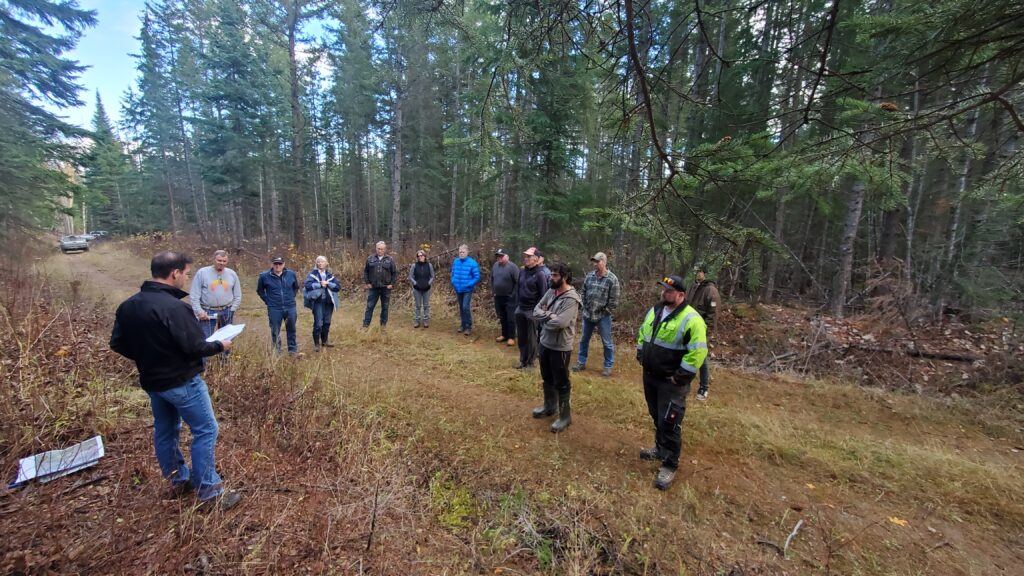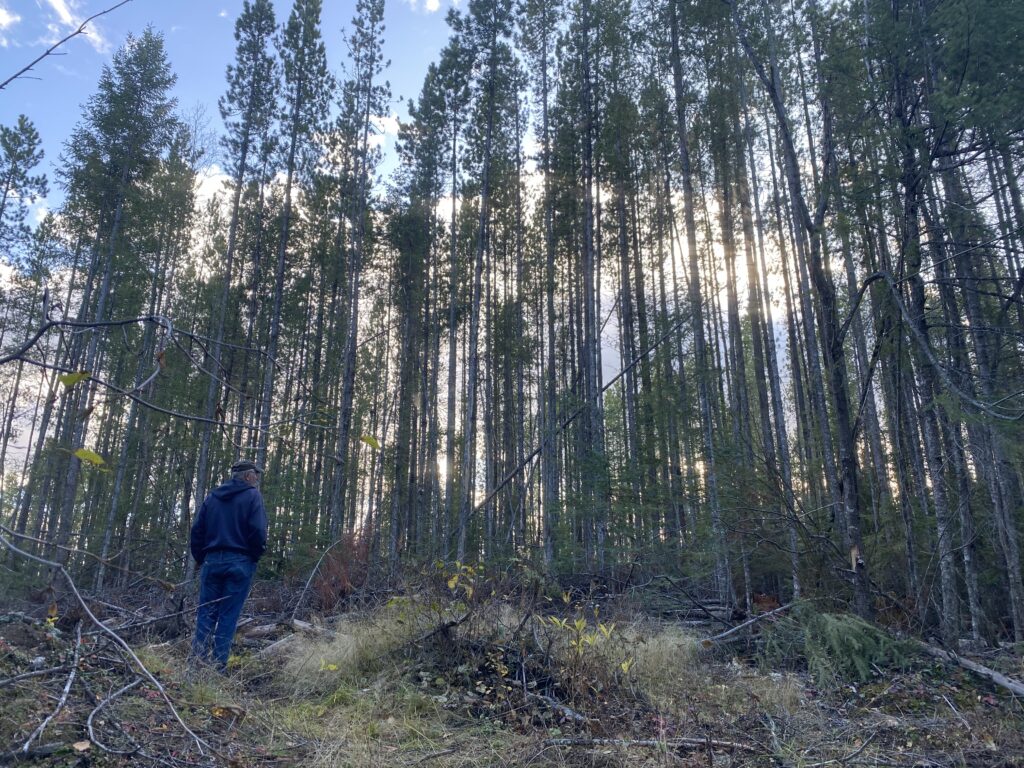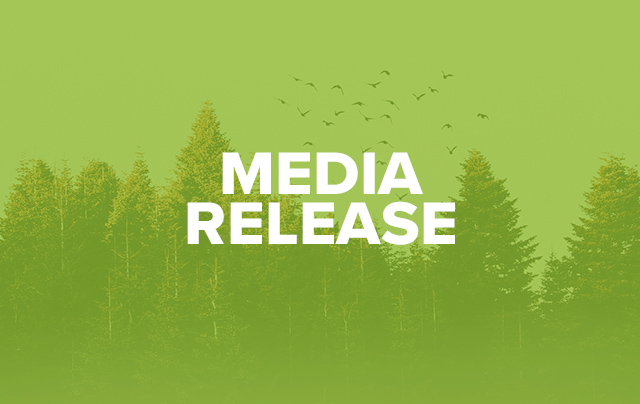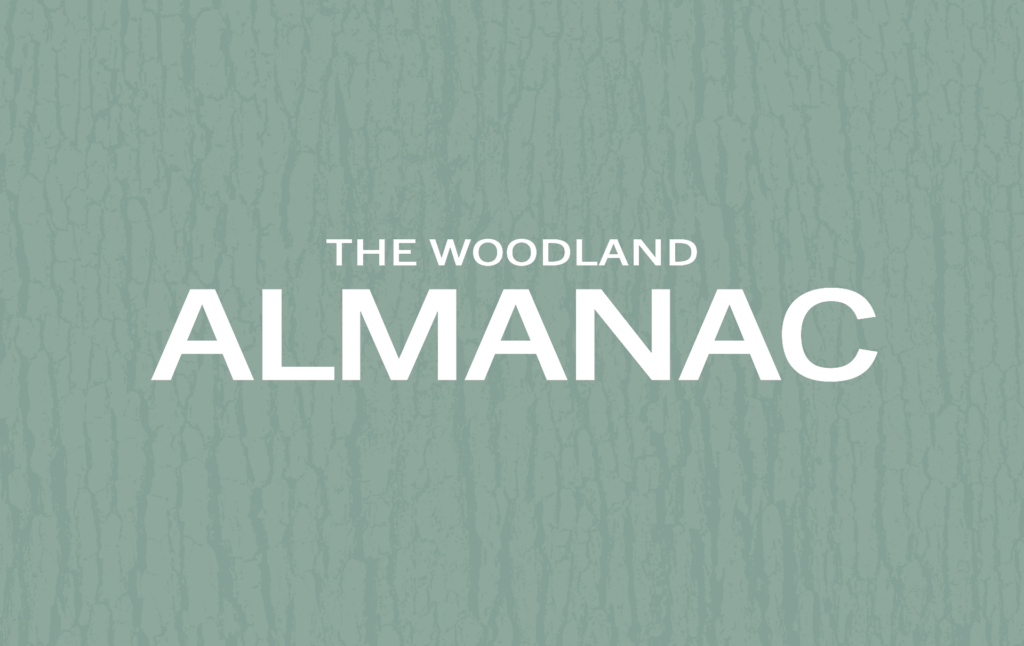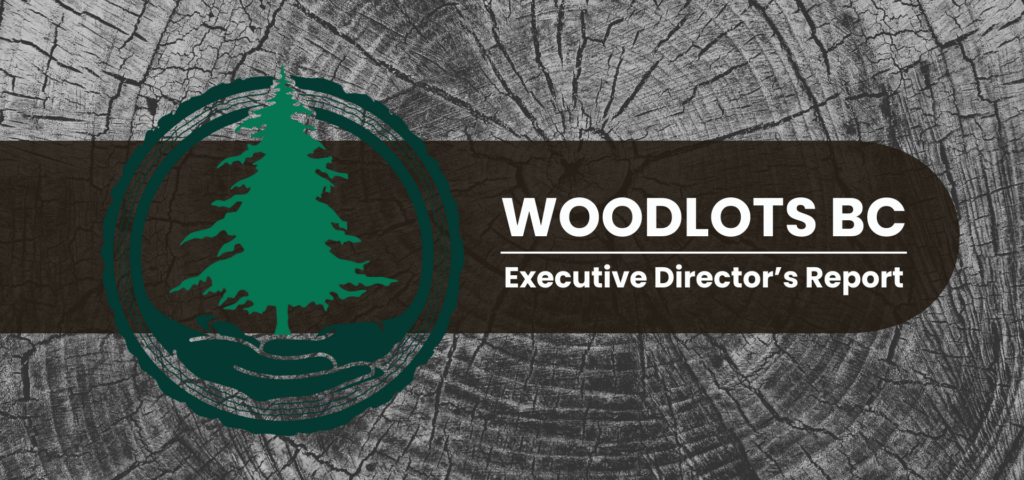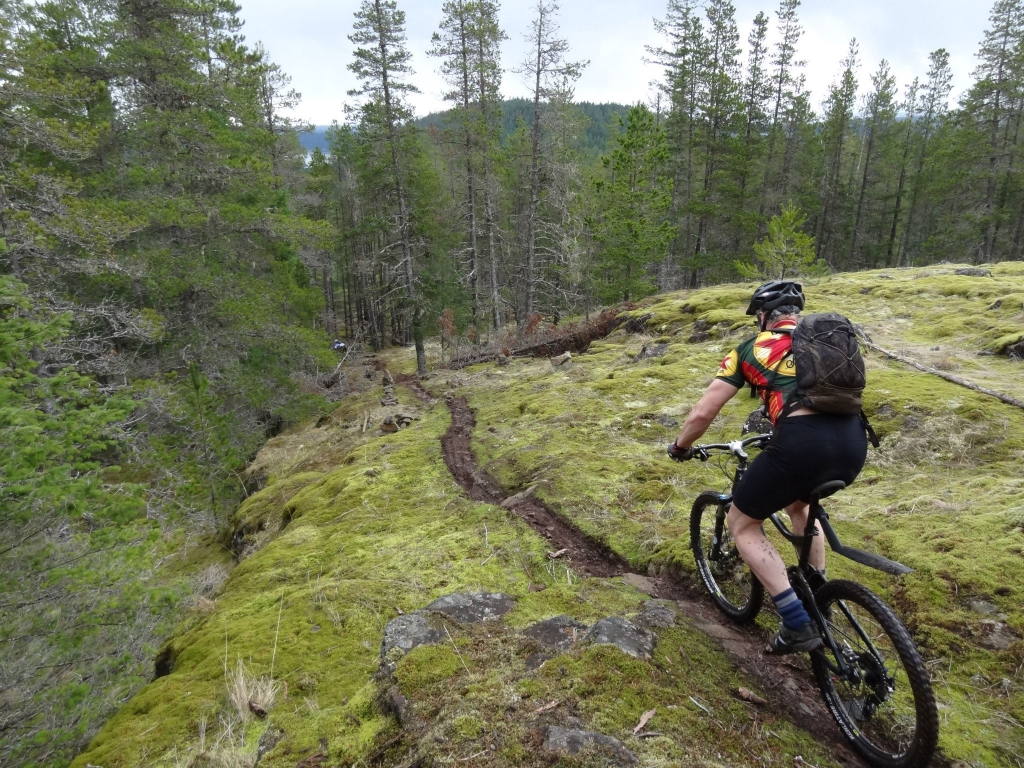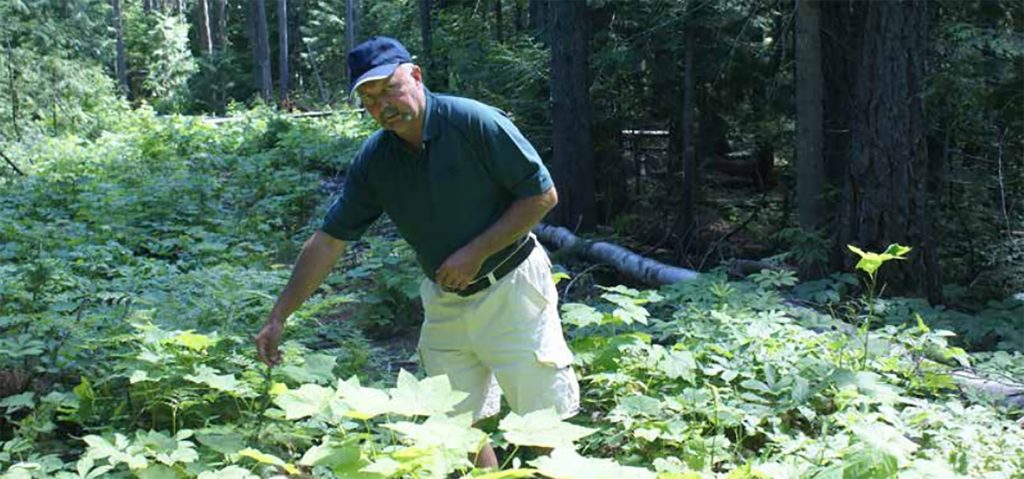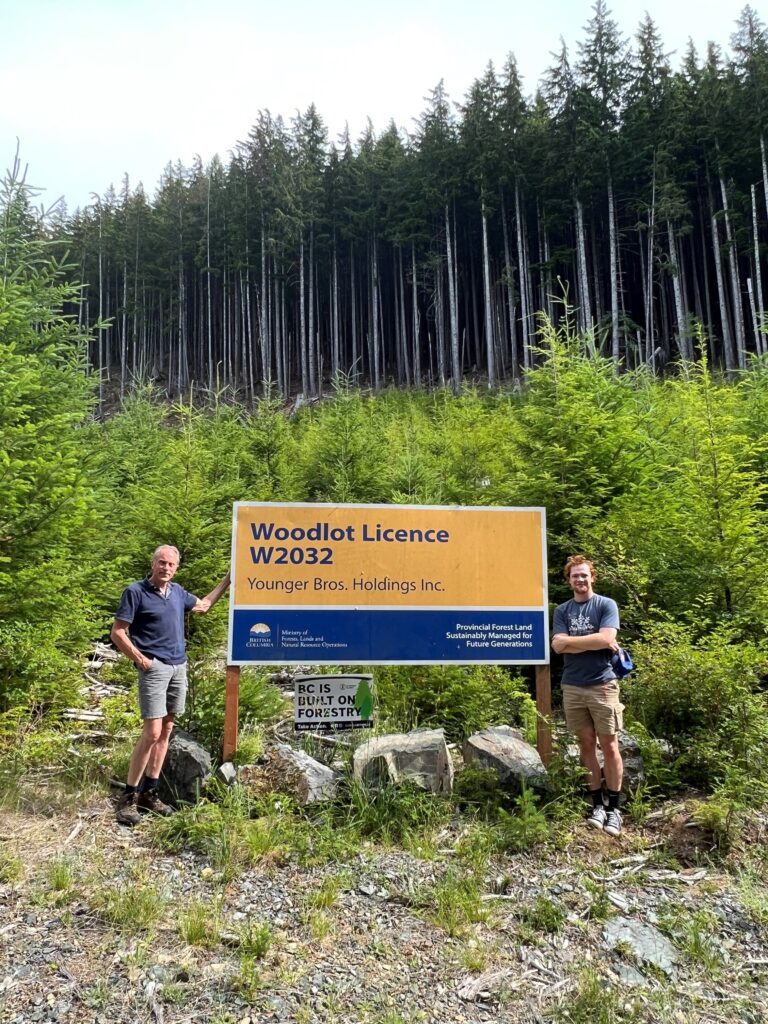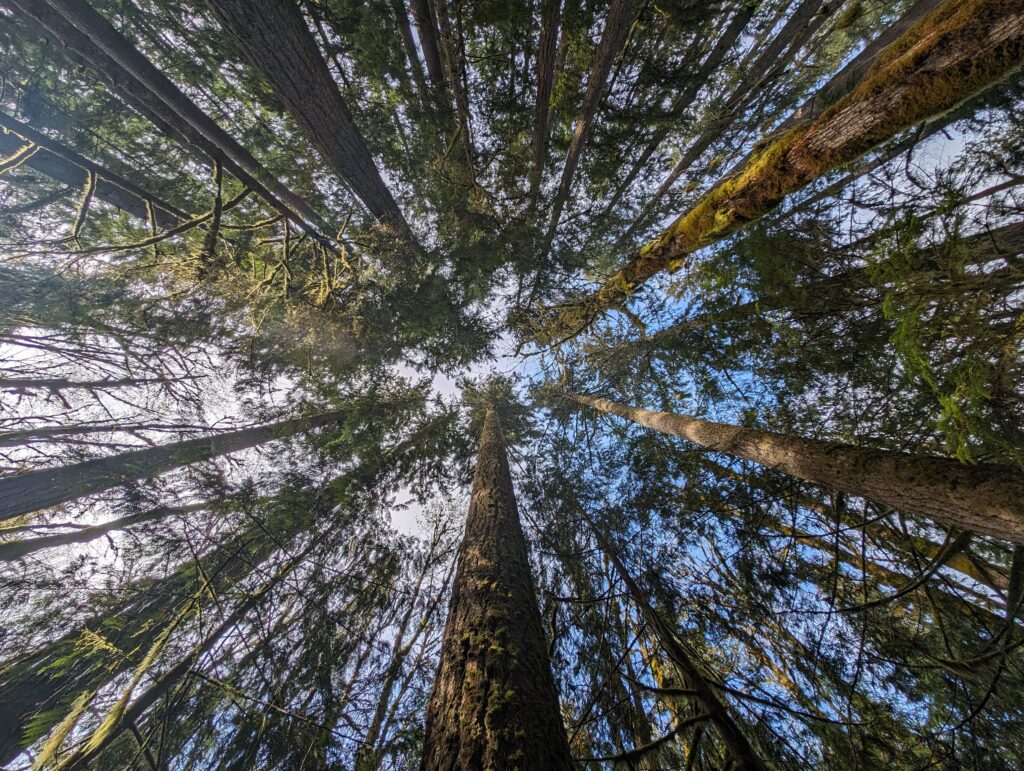By Melissa Steidle, North Region Woodlot Representative
In mid-October, the Prince George Woodlot Association organized a field tour of a commercial thinned block in the PG TSA near the Willow River on Highway 16. The PG Woodlot Association invited the Stuart Nechako and the Quesnel Woodlot Associations with a turn out of 14 people.
The woodlot the tour was held at was the Willow River Demonstration Woodlot and where better to test commercial thinning on a woodlot. In 2020 layout was completed for a commercial thinning treatment, targeting 3 different timber types.
Stratum A Douglas fir leading
Silviculture label: FG – Fdi57Bl21Sx16Pli6 – 60 – 16.6 – 784 (23)
Stratum B Spruce leading
Silviculture label: FG – Sx69Bl22Pli3Fdi1 – 60 – 20.0 – 840 (23)
Stratum C Pine leading
Silviculture label: FG – Pli71Fdi13Bl13Sx3 – 60 – 17.0 – 960 (23)
The types where all age class 3 and averaged 60 years in age. The site index in the area is high as the site is a SBS wk1 site with a site index of over 20. The area had burned in the 1961 Grove Fire which burned through nearly 25,000 ha of forests east of Prince George. The regenerated stands from this fire comprise of just under a 1/3 of the woodlot area.
The treatment was completed by harvesters and forwarders with a target machine access trail and selection zone widths were 5m and 15m respectively. Operationally the trail widths ranged between 5-7 meters with a selection zone of 12-16 metres. The treatment is very visible on google earth, as the trails are distinct.
The group asked lots of questions of Mike Trepanier, RPF who oversaw the treatment. His advice is as follows:
- A good contractor with the proper equipment, trained and skilled operators and willingness to achieve the treatment objectives is key to a successful thinning operation.
- Real-time monitoring and feedback to the machine operators is needed to ensure goals will be met. Be on site often, particularly early in the process, to check access trail and selection zone widths and basal area retention to ensure just the right amount is being taken from the stand and that post harvest retention targets are on track to being met.
- Be prepared to survey one-year after completion of commercial thinning to assess whether your post-harvest stocking objectives have been met. The Douglas fir leading stratum was thinned with a minimum target of 20m2/ha of preferred and acceptable conifer species, but because the final basal area was only 16.9m2 one year after harvest, the stand required a conventional silviculture survey using the Stocking Standards for Specified Areas as defined in the approved WLP in order to be declared free growing. Coincidentally, there were more than enough post harvest trees to meet the “even-aged” stocking standards.
- Mike has now concluded that the uneven-aged stocking standards that are provided as a default stocking standard for commercial thinning in most approved interior WLP’s do not require enough post-harvest stocking which could result in a significant loss of future stand volume growth potential. Therefore, it is not advisable to harvest down to these stocking standards.
- If the 20m2/ha post-harvest basal area retention cannot be met, the appropriate stocking standard should be the normal even-aged stocking standards. Mike recommends that this standard be written into new WLP’s for areas subject to commercial thinning.
As commercial thinning gets applied to more stands in BC, we’ll start to understand how our stands react to the treatment. Removing fibre at the commercial thinning stage does not increase the amount of fibre removed from the stand over the course of the rotation. Rather, a portion is removed when the stand is 40-60 years old, and then at the end of the rotation, the remaining volume is removed. However, the trees at rotation are individually larger than they would have been if left as an intact stand. Not only are the trees larger, they are better quality as the damaged or diseased trees were removed during the commercial thin.
Managing for commercial thinning starts with the initial harvest when your planting prescription is developed. We need to plant at higher densities and then complete a juvenile spacing treatment. Commercial thinning is the third treatment, prior to the harvest at rotation. At rotation a regeneration harvest will be undertaken. This will bring the stand back to the reforestation stage.
